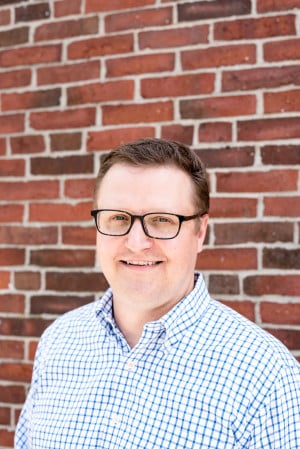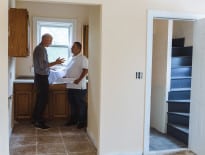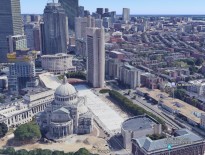Greg Karczewski
Title: President, Union Square Station Assoc.
Age: 46
Industry experience: 23 years
After years of community discussions and uncertainty about the timing of the MBTA Green Line Extension, the billion-dollar redevelopment of Somerville’s Union Square is scheduled to break ground this fall. The development partnership, consisting of Chicago-based Magellan Development and RAS Development, recently added a new equity investor in USAA Real Estate. The first phase will consist of a 175,000-square-foot office-lab building and 400 multifamily units. Greg Karczewski relocated from Chicago to the Boston area after US2 Assoc. was selected as master developer for the 15.7-acre site in 2014. The University of Notre Dame and Kellogg School of Management graduate previously worked for Hines in Colorado on redevelopment of the Aspen Highland ski resort before joining Chicago-based Mesirow to work on multiple mixed-use projects.
Q: What does the addition of USAA Real Estate to the development team mean for the financial capacity of the project?
A: Any project of this scale takes a number of capital partners, particularly when there’s a number of different product types. As we looked forward to capitalize the projects, we looked for a partner that had a great reputation and a depth of experience across all different product types. USAA also has a great social mission, as a company owned by military members and their families.
Q: You had a fellowship at World Business Chicago focusing on economic development issues. What type and did they have relevance to the Union Square project?
A: I spent a year on loan from (RAS predecessor) Mesirow to World Business Chicago, the economic development arm of the city of Chicago. My role there was working on a couple of different projects with the Chicago Transit Authority, a bus rapid transit program, to think about financing strategies.
Certainly the manner in which transit can unlock development potential was relevant to what we’re doing in Union Square. The city was thinking about value capture strategies for funding big transit projects, the idea that as transit gets installed and property values escalate, how can the appreciation in value contribute to the construction? That’s something the commonwealth of Massachusetts has been looking at as well.
Q: How has the Union Square neighborhood changed during your involvement with this project?
A: There’s become greater certainty around the plan. The city in 2012 put out a comprehensive plan that Union Square over the longer term should be transformed into an employment center. 80 percent of the people in Somerville leave Somerville to go to work every day and almost all of Somerville (real estate) is residential. The idea was to give people a place to work in Somerville and shift the base to be commercially driven. The Green Line Extension is a key part of that, but as we look at Union Square and the population around it, there’s a great employee base right here. A lot of the employees are already here and that’s a tremendous advantage for the location, plus the proximity to Kendall Square just a mile down the road.
Q: What’s the next step in the land disposition process?
A: We have a contract with the city of Somerville for the D-2 block, which is the first phase. Each of the properties we will privately negotiate with the owners.
Q: What steps are you taking to limit displacement of commercial and residential tenants?
A: That’s been an important community topic. On the housing side, Somerville is very progressive in passing the first 20 percent affordable housing in the Boston metro area. There’s housing linkage payments that will be paid, which is another resource to solving housing affordability issues. On the commercial side, 5 percent of the commercial space is going to be dedicated to arts and creative enterprises, which is important to the identity of Union Square. And there’s a job linkage program that will be focused on local workforce development and jobs training.
Q: Is there a requirement for independently-owned tenants for the retail space?
A: There’s no requirement, but it’s definitely important to continue the tradition of diverse retailers in Union Square. Jesse Baerkahn of Graffito SP is our leasing broker and we picked him because of his ability to creative dynamic mixed-use environments. On the office and lab side we’re working with Molly Heath and Pete Bekarian from JLL. We expect (office-lab) rents will be a value compared to Kendall Square, no doubt about it.
Q: What’s the likely program of development in the second phase?
A: We’ll continue to execute a mixed-use program. For the next set of projects, we’ll be focused on the site that’s north of D2 for a potential hotel and additional commercial development. And south of the tracks, we’ll be marketing a 280,000- to 300,000-square-foot office or lab opportunity.
Karczewski’s Five Favorite Activities:
- Hanging out with his wife and two boys.
- Watching college football.
- Fly fishing for freshwater trout.
- Creating or building something.
- Traveling somewhere new.




 |
| 


